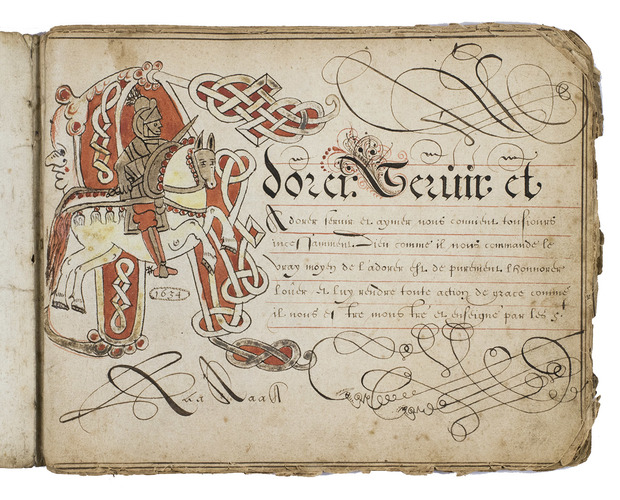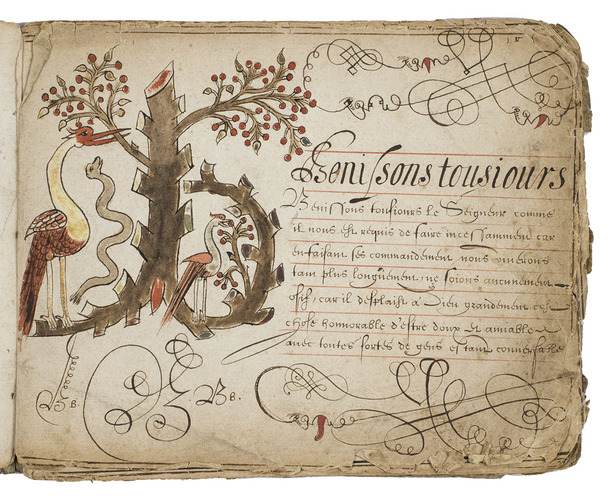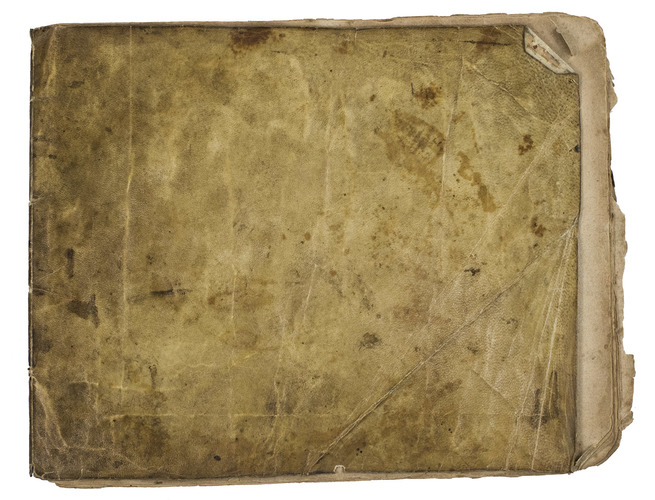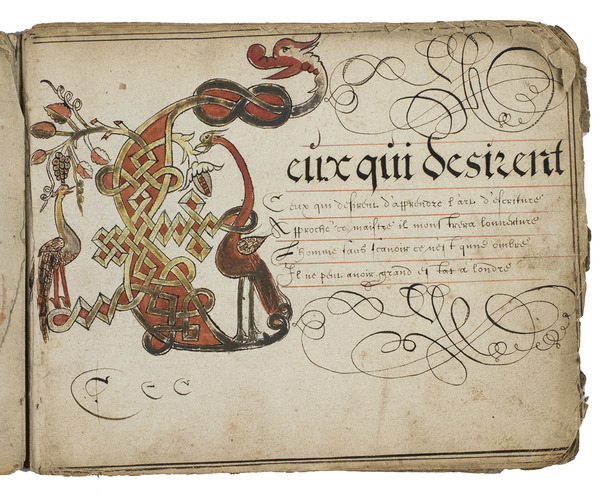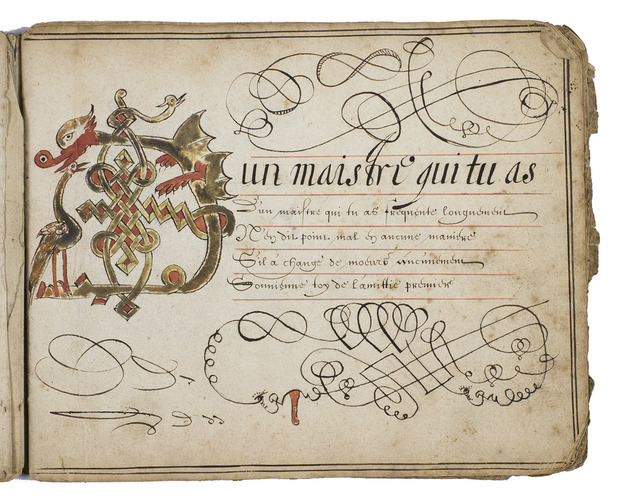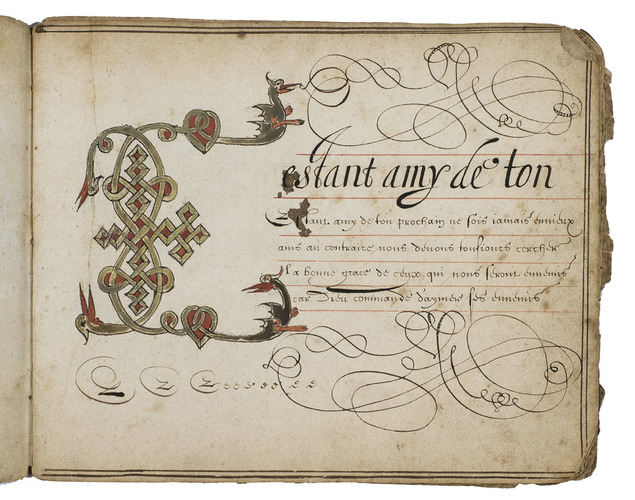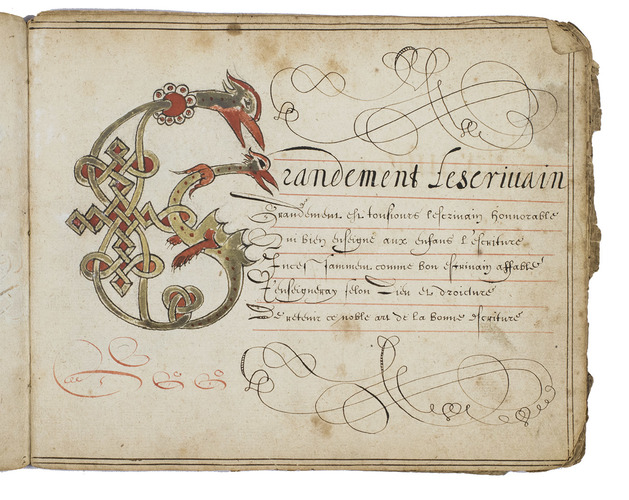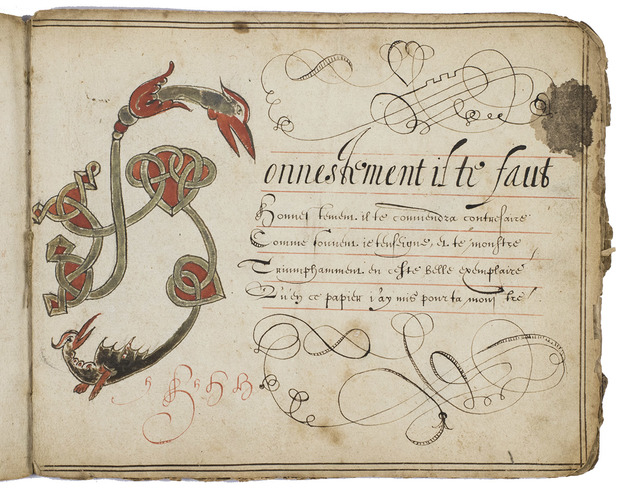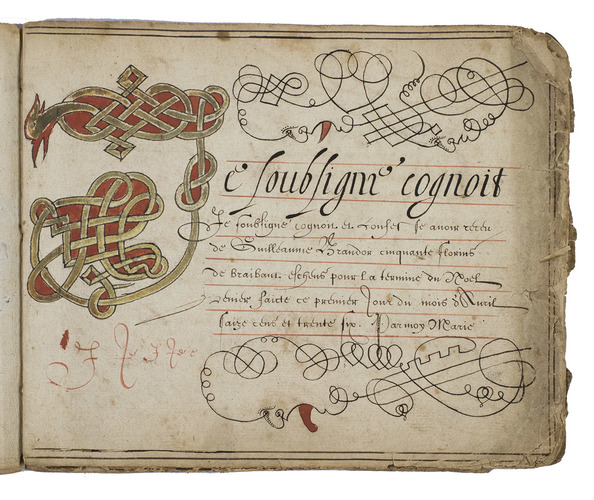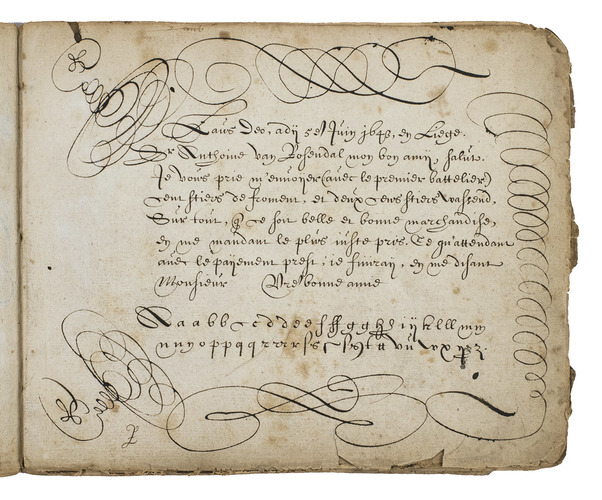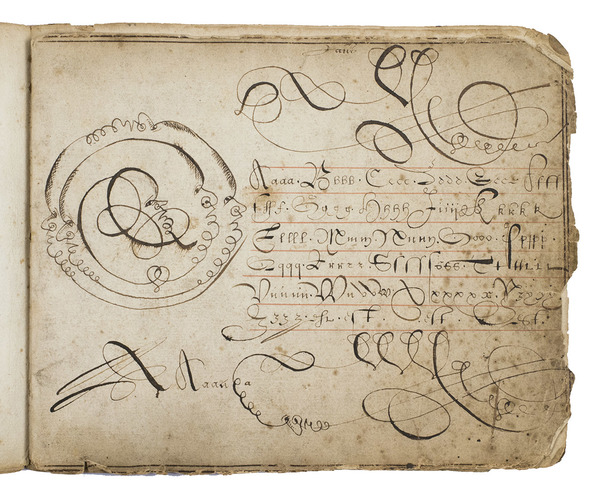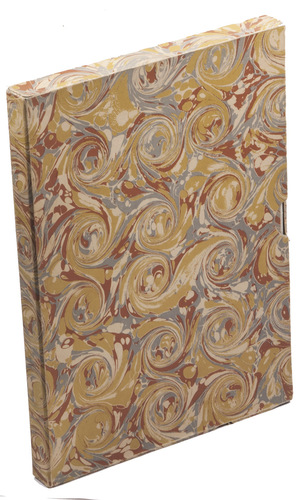[MANUSCRIPT - CALLIGRAPHY - FRENCH].
[Writing masters copy-book].
[Liège?], 1634-1643?. Oblong 4to (17.5 x 21.5 cm). A manuscript writing masters copy-book in French, written on the rectos only, mostly in black ink on paper, each of the first 9 leaves beginning with a very large (9-13 cm) decorated initial drawn in pen and ink, displaying knotwork (sometimes making heart forms) and extensive stylized pictorial elements - both reminiscent of mediaeval Keltic examples - and coloured by a contemporary hand: A-I/J in alphabetical order, and the same letter of the alphabet written below the initial in several styles of gothic capitals and usually also minuscules (A-E in black, F-I/J in red). The two remaining leaves, also in an upright gothic cursive, show an 8-line model text (a letter to a friend, Antoine van Rosendal, dated from Liège, 5 June 1643) with a 2-line minuscule alphabet (beginning with a capital A) below and several other As separately; and a complete capital and minuscule (24-letter) alphabet, including W (6 lines); both with penwork flourishes, including (in the former) a round spiral incorporating 6 faces in profile. Sewn through 3 holes in a contemporary sheepskin parchment wrapper. Kept in a 20th-century French curl-marbled paperboard folder, in a matching marbled slipcase. [11], [10 blank] ll., the 10 blanks including 3 small fragments.
€ 12,500
A calligraphic manuscript - writing masters copy-book - in French, comprising 11 unnumbered leaves of models for calligraphic exercises. Although it gives no place of origin, the model letter is dated from Liège and addressed to Anthoine van Rosendal (a Dutch name) and the model promissory note is in Brabant florins. Taken together, these suggest an origin in the French-speaking parts of the southern Low Countries, perhaps Liège itself, even though the promissory note also refers (somewhat sarcastically) to London. The manuscript is visually very appealing and calligraphic manuscripts with decoration like the present one are rare: it contains vividly decorated initials and extensive pen-work flourishes in the margins, some incorporating faces. The texts of the alphabet leaves, some of them in verse, include devotional or moral matters.
The narrow pointed-pen italic hand used for the first line in most of the 9 leaves with knotted initials shows a style introduced by Giovan Francesco Cresci in his woodcut copy-book (Rome, 1568) and further developed in the Low Countries and France in the later 16th and early 17th centuries, so it would have been known in the 1630s and 1640s, though less common than the traditional gothic hands and the new Latin script. Baroque flourishes became more common and more extensive, as in the present manuscript, sometimes incorporating human and animal figures, but those in the present large decorated initials seem to reflect a much rarer influence from mediaeval (possibly Keltic) manuscripts. The present manuscript, with its elaborate decorative initials, gothic alphabets and flourishes, is both a beautiful example of the developments in calligraphy at this time and an unusual departure from the norm.
The writing master who prepared the present copy-book probably intended to include a leaf for each letter of the alphabet (I/J and U/V counting as one letter each), but apparently stopped with I/J (completing the first 9 of the 24 letters) for there is no other evidence that written leaves have been removed. Moreover, since the manuscript is a single quire with the second half blank, it could not easily have had fifteen more leaves following A9. In the blank second half of the manuscript, 1 leaf is completely lost, 3 torn out leaving a small piece and another has a large chip. Much of the sewing has come loose and the book block has separated from the parchment wrapper, so that A1-A3 are now entirely detached. The edges of several leaves are frayed, some have small corners folded in or occasionally lost, they show minor foxing throughout (mostly on the blank leaves) and a few stains (barely affecting the text), but the calligraphic model texts and the initials are in very good condition and the colours still bright. The parchment wrapper is wrinkled, slightly dirty and the upper right edge of the front wrapper may have been nibbled by a mouse. The slipcase is only slightly worn around the edges, and the marbled paper torn along the hinges of the folder.
Related Subjects:












